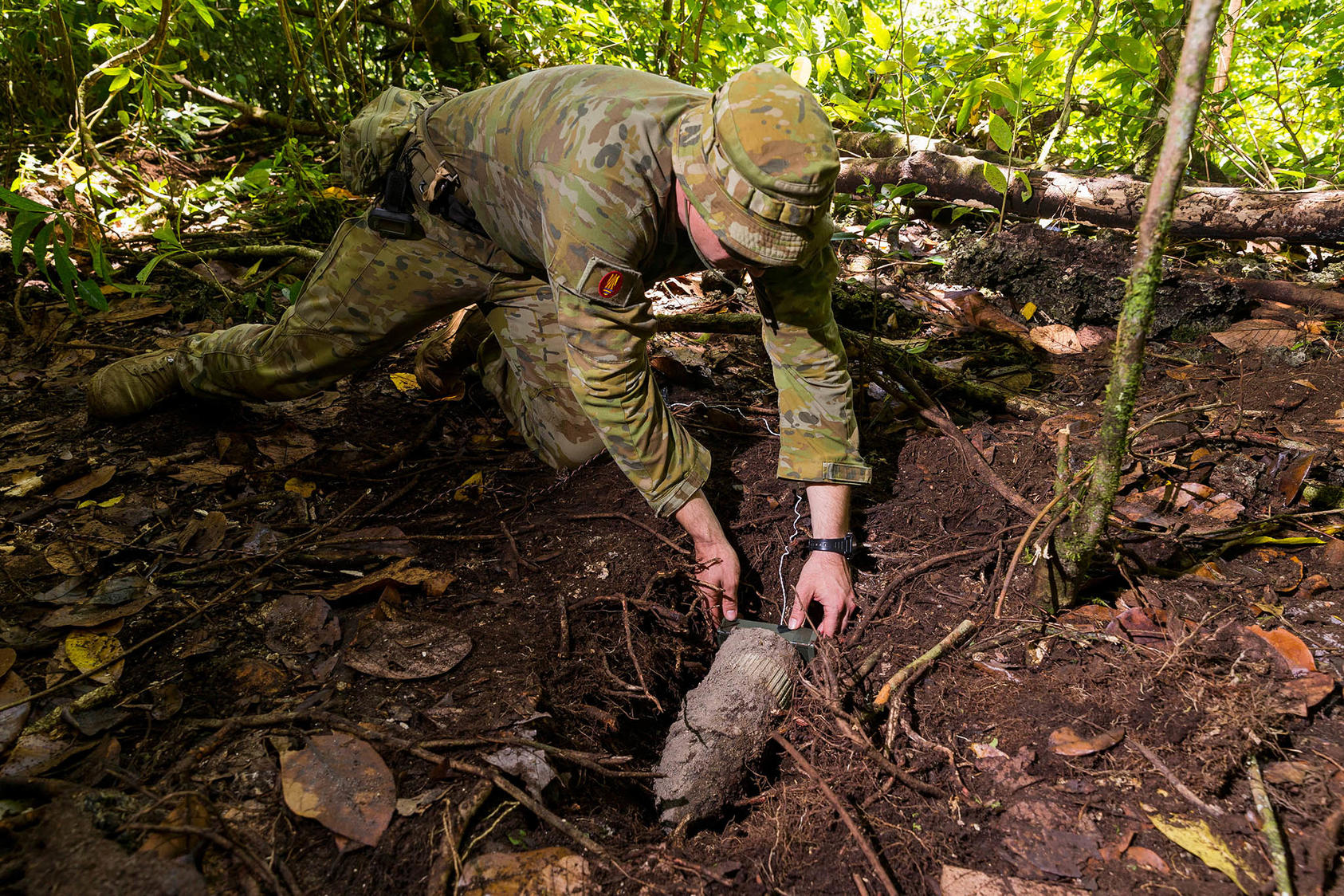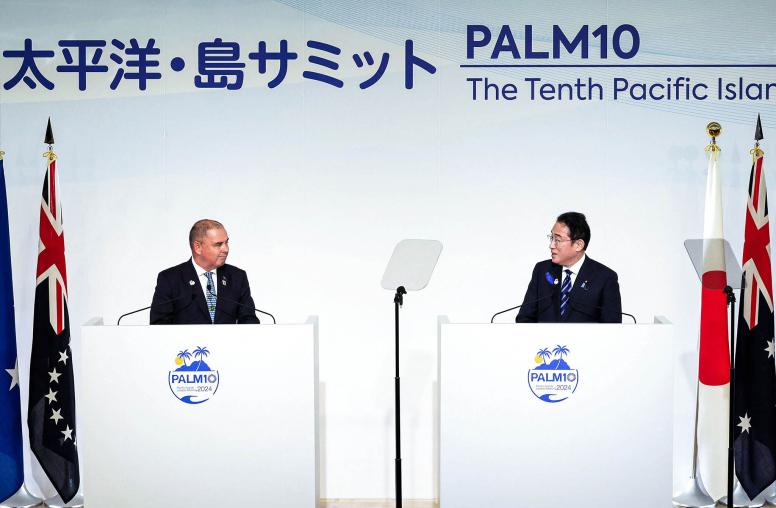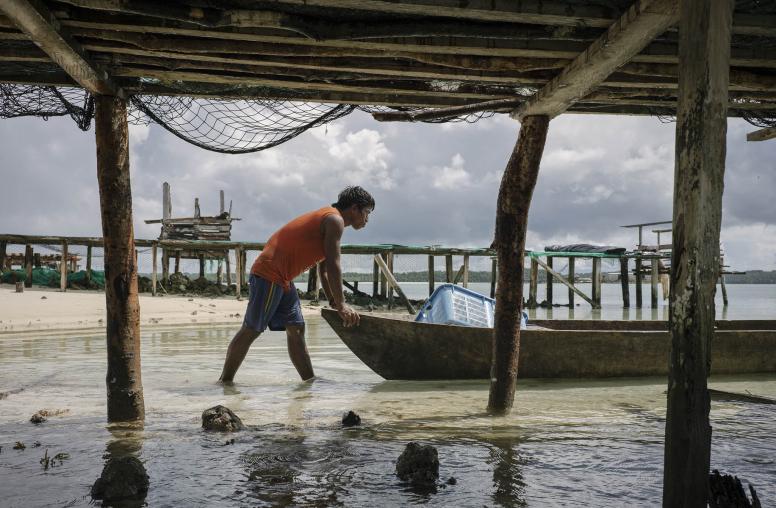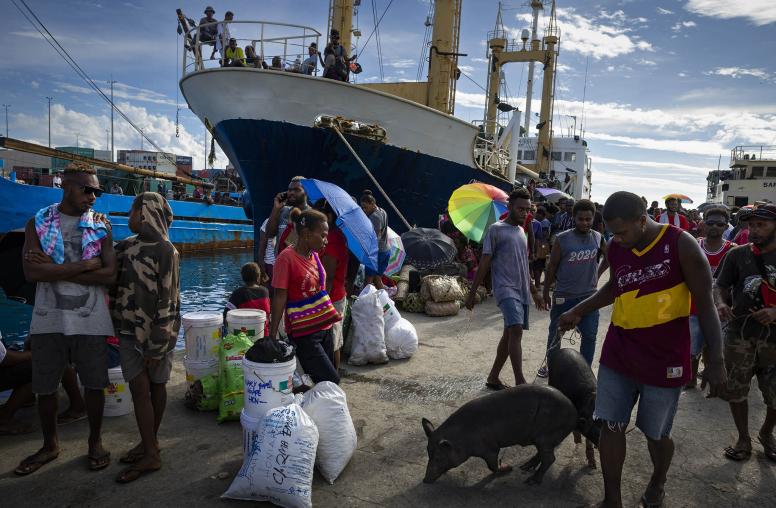Solomon Islands: WWII Legacy Unresolved 80 Years After Guadalcanal Campaign
Solomon Islanders fought alongside the Allies — but still suffer casualties from war-era bombs.
On August 7, the Solomon Islands will commemorate the 80th anniversary of the Guadalcanal campaign during a visit from U.S. Deputy Secretary of State Wendy Sherman and U.S. Ambassador to Australia Caroline Kennedy, whose fathers both fought there in World War II. As the United States and its partners look to strengthen their relationships with the Solomon Islands, addressing the enduring legacies of WWII — particularly the issue of unexploded ordnance — should be a renewed focus.

The Solomon Islands Was a Pivotal WWII Battleground
Beginning on August 7, 1942, the Guadalcanal campaign was a six-months-long series of battles fought between Allied forces and Imperial Japan on and around Guadalcanal, the largest landmass in the Solomon Islands.
When Imperial Japanese forces advanced into the South Pacific in 1942, the Allies were increasingly concerned that Japan would cut communication and supply lines between the United States and Australia and directly threaten Australian territory. But the Guadalcanal campaign put an end to Japan’s military expansion in the Pacific.
It was a shift in the Allies’ posture from defensive to offensive operations — and became a turning point in the war. The Allied victories in the Solomon Islands and Papua New Guinea allowed for subsequent offensives that led up to the Philippines campaign, the Volcano and Ryūkyū Islands campaign, and the eventual surrender of Japan.
During the Guadalcanal campaign, as well as the larger Solomon Islands campaign, Solomon Islanders fought alongside Allied troops, participating in both frontline and guerilla combat. They also played vital roles working as guides, rescuing Allied servicemen from behind enemy lines, and gathering intelligence on Japanese troop movements as part of a volunteer network called the Coastwatchers.
The significance of the Coastwatchers prompted U.S. Admiral William “Bull” Halsey, who directed U.S. forces in the Solomon Islands, to commend their contributions to the war: “The Coastwatchers saved Guadalcanal, and Guadalcanal saved the South Pacific.”
The Coastwatchers also saved a future U.S. president: Lt. John F. Kennedy and some of his crew were thrown overboard when a Japanese destroyer rammed their patrol boat on August 2, 1943, and they sought refuge on an uninhabited island, where they were rescued days later by Solomon Islanders.
Solomon Islanders Still Feel the Effects of WWII
The U.S. Guadalcanal Memorial, which stands in the Solomon Islands’ capital of Honiara, commemorates the liberation of the archipelago by Allied forces and the shared sacrifices made during the war — themes that are frequently echoed by U.S. officials’ statements reaffirming historical ties between the United States and the Solomon Islands.
But the United States’ role in the country has not been wholly positive. Today, the Solomon Islands is still littered with unexploded war-era bombs and land mines — probably numbering in the thousands — that are buried throughout the country, including in residential areas.
Meanwhile, regular U.S. engagement with the Solomon Islands has declined since the United States closed its embassy in Honiara in 1993. As a result, one Solomon Islands journalist wrote that for most people in her country, World War II bombs are “among the few regular reminders of the West.”
Unexploded ordnance continues to kill and endanger Solomon Islanders. Last year, a group of young people were holding an outdoor fundraiser in Honiara when a World War II shell exploded underneath them, leaving one dead and three seriously injured. The tragic event followed several other deaths from World War II bombs in recent years, along with the periodic discovery — both on land and at sea — of unexploded munitions numbering in the tens, hundreds, and thousands.
Dispersed across the Solomon Islands and buried in unknown locations, unexploded ordnance also creates barriers to socioeconomic progress and much-needed development. The construction of new buildings is frequently complicated by the removal of bombs. And as the country’s population grows and development picks up speed, it raises the risk that construction work will accidentally detonate unidentified munitions.
The United States and Its Partners Must Step Up
The Explosive Ordnance Disposal (EOD) team of the Royal Solomon Islands Police Force lacks the financial resources and personnel it needs to carry out its mission. Over the last few decades, the United States, Australia, New Zealand and Japan have made efforts to remove unexploded ordnance and bolster the Solomon Islands’ EOD capabilities — but the problem still persists. And Solomon Islanders who have lost loved ones see U.S. efforts as inadequate, with many calling for the United States to clean up its “mess.”
On his trip to the Solomon Islands in April, Kurt Campbell, the Indo-Pacific coordinator for the U.S. National Security Council, pledged to advance the removal of unexploded ordnance as part of renewed U.S. attention to the country. In June, the United States formed the Partners in the Blue Pacific in conjunction with Australia, Japan, New Zealand and the United Kingdom, aiming to create “more effective and efficient cooperation in support of Pacific Island priorities.” And in July, the United States announced new commitments to the Pacific Islands, including a forthcoming national strategy on the region.
The United States and its partners are renewing focus on the Pacific Islands amid concerns that China is seeking a military presence in the Solomon Islands or the broader region, where its pursuit of dual-use infrastructure projects resembles Japan’s military buildup before World War II. The anniversary of the Guadalcanal campaign further underscores the enduring strategic importance of the Pacific Islands.
But while the United States and its partners are focused on countering China, many Solomon Islanders are concerned about issues that directly affect them. The continuing legacy of World War II shows what can happen to small countries caught up in a conflict between larger powers. To provide an alternative to Chinese engagement and cement positive relationships with both the Solomon Islands and other Pacific Island countries, the United States and its partners must be responsive to local priorities and concerns.
Unexploded ordnance is a significant and unresolved bilateral issue between Washington and Honiara that is now 80 years old. Addressing it more fully could bring the U.S.-Solomon Islands relationship to new levels, just as addressing the legacy of the Vietnam War has also brought the U.S.-Vietnam relationship into a new, positive phase.
The United States and its partners should expand funding for explosive ordnance disposal programs and capacity-building for the Royal Solomon Islands Police Force. Efforts should be made to detect and map the locations of undiscovered munitions. Partners should also consider convening dialogues with local groups to discuss the legacy of World War II in the Solomon Islands and the region more broadly. These issues could also provide a practical basis for more regular policy dialogue between the U.S. and Solomon Islands governments.
As the United States and its partners warn the Solomon Islands about the dangers of a Chinese military presence, it should not be forgotten that for regular people in the country, the most clear and present danger comes from unexploded ordnance — and much of it was left there by the Allies.



